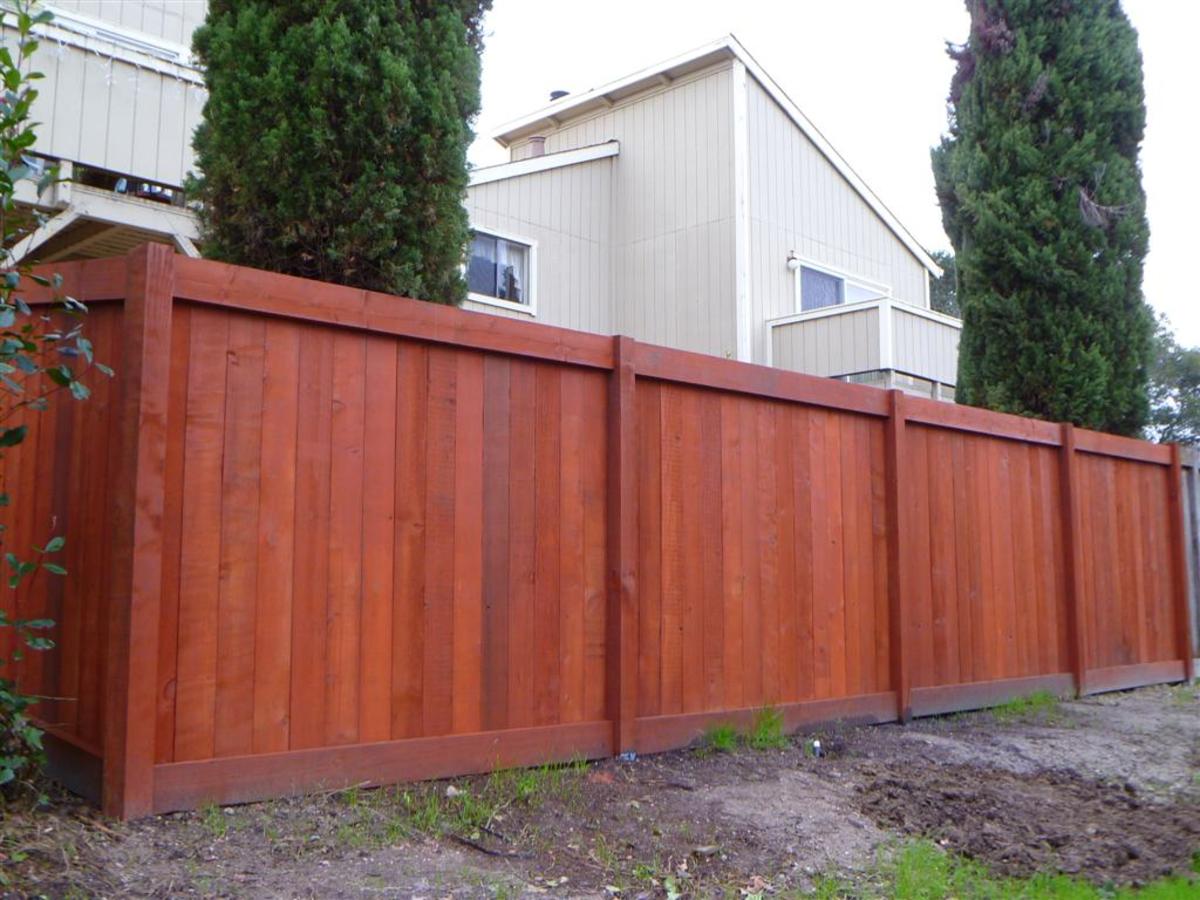Just How to Choose the Right Fencing Discoloration for Your Residential Or Commercial Property
When it involves enhancing the appearance and longevity of your property's fencing, selecting the appropriate discolor is an essential decision that calls for careful factor to consider. With a myriad of choices readily available out there, each dealing with different timber types, colors, and transparency degrees, the process can quickly become overwhelming. Making an enlightened option can dramatically influence the total aesthetics and longevity of your fence. So, just how can you make sure that you select the best fencing discolor that straightens with your home's design and maintenance needs? Let's check out some vital aspects to direct you in this decision-making procedure.
Comprehending Wood Kind
To select the ideal fence stain, it is important to have a detailed understanding of the different types of timber frequently utilized for fencing. The selection of wood plays an essential role in figuring out the durability and total visual appeals of the fence. Cedar is a preferred choice as a result of its natural resistance to decay and bugs, making it a durable alternative for exterior structures. Pine is one more usual timber used in secure fencing, known for its cost and ease of staining. Nevertheless, ache is more prone to bending and decaying contrasted to cedar. Redwood is a premium alternative known for its striking appearance and all-natural toughness, though it comes with a higher cost. When choosing a fencing stain, it is important to think about the sort of timber being made use of to guarantee compatibility and ideal defense. Recognizing the features of various wood types will aid you make an educated decision when it comes to choosing the best fencing stain for your building - Fence Staining Nashville TN.
Picking the Right Shade
Selecting an ideal hue for your fence discolor is an important choice that considerably influences the general visual allure of your property. Lighter colors such as whites or light grays can make a fencing show up larger and include a touch of sophistication to your residential property. Ultimately, the ideal shade selection will improve the elegance of your fencing and elevate the general aesthetic allure of your home.

Considering Openness Degrees
When picking the right shade for your fencing discolor, another essential aspect to think about is the level of openness that will certainly ideal fit your residential property's aesthetic and upkeep demands. Openness degrees in fence discolorations generally fall under 3 categories: clear, semi-transparent, and solid. Transparent spots permit the all-natural charm of the timber to show through while providing minimal protection versus the aspects. They are suitable for new or well-maintained fences where showcasing the timber grain is a concern. Semi-transparent discolorations provide an equilibrium between shade enhancement and defense, permitting some timber grain to be noticeable while supplying moderate protecting from UV rays and moisture. Strong spots, on the other hand, give one of the most security as they completely cover the timber with a nontransparent coating. These appropriate for older fencings or those looking for considerable protection or shade modification. Consider the degree of exposure your fencing deals with, the wanted maintenance regularity, and the aesthetic you desire to achieve when choosing the appropriate openness degree for your fence discolor.
Examining Upkeep Requirements
Thinking about the long life and upkeep of your fencing, evaluating the maintenance demands is critical in identifying one of the most ideal fencing tarnish for your home. The degree of upkeep required for your fencing can differ relying on factors such as the sort of timber, climate problems in your area, and your personal preferences.
When evaluating upkeep needs, it is necessary to think about the longevity of the fencing tarnish. Some stains call for even more constant reapplication than others, so picking a tarnish with a much longer life-span can help in reducing the general upkeep demands of your fence (Fence Staining). In addition, elements such as resistance to UV rays, water, and mold can impact exactly how commonly you need to re-stain your fence

Testing Examples Prior To Application
Before applying any fence tarnish, it is suggested to carry out sample tests to guarantee compatibility with the wood and desired visual outcome. Testing examples permits you to evaluate how the discolor will connect with the details kind of timber utilized in your fence, as various woods his response can absorb stains in different ways. To start, select a little low-profile location of the fence to apply the tarnish samples.
Conclusion
To conclude, picking the appropriate fencing tarnish for your property includes understanding the wood kind, choosing the right shade, considering openness degrees, examining maintenance requirements, and testing examples prior to application (Fence Staining). By taking these variables right into factor to consider, you can ensure that your fence tarnish matches your property while offering the needed defense and longevity. Make an informed choice to boost the look and longevity of your fencing